
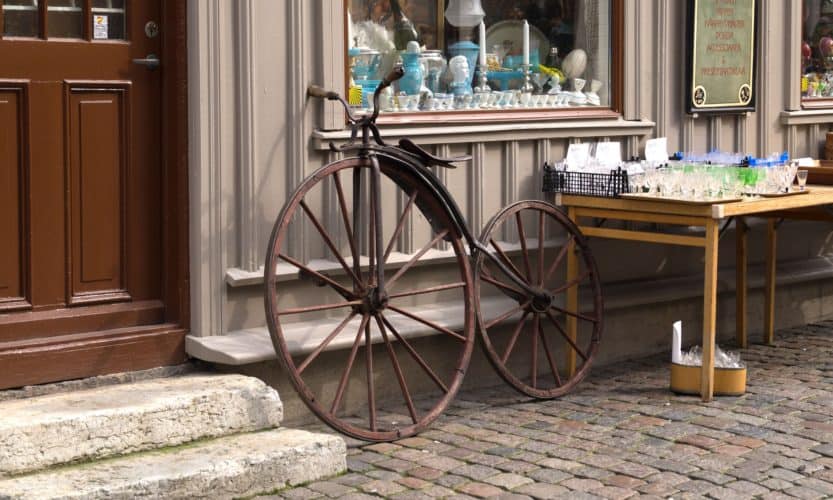
Göteborg – also known as Gothenburg – is too often overlooked in Scandinavian travel itineraries. However, as the second-biggest city in Sweden, it boasts over 800,000 inhabitants. So there must be some things to do there, right?
If Göteborg isn’t on your bucket list yet, you should put it on there. Here’s why.
Note: I got these insights from Margot, who was in this magnificent Swedish city between August 2016 and January 2017 for her Erasmus stay. You can take a look at her beautiful pictures on Instagram. Margot, if you’re reading this: thank you so much for giving me your inside tips about Göteborg and for allowing me to adapt and use the information you gave me for this post!
Without any further ado, let’s get right into it.
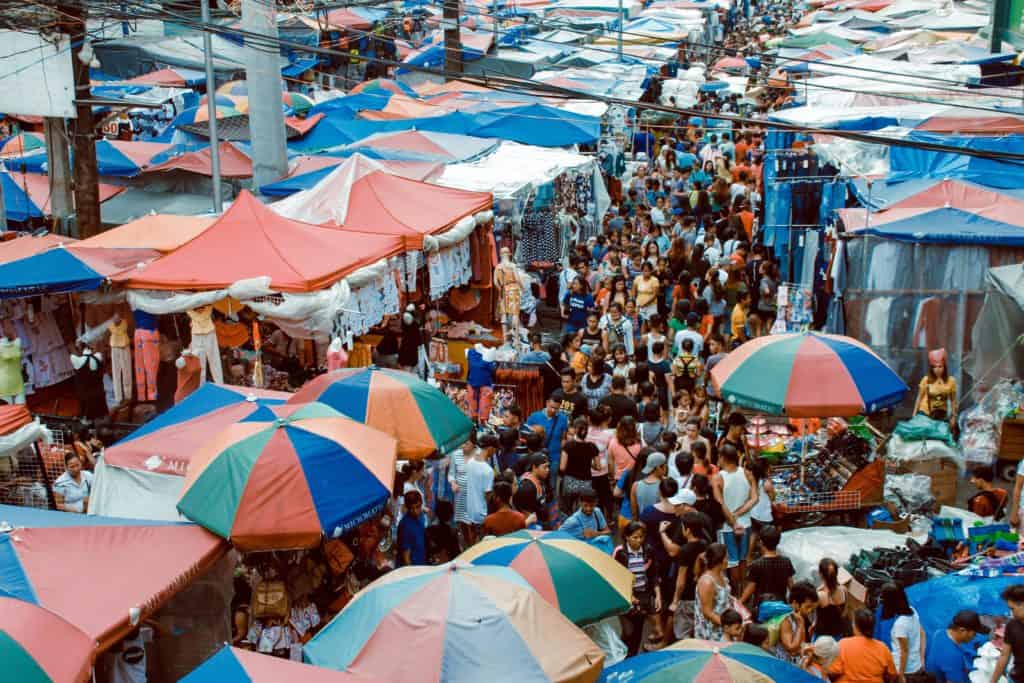
If there’s one thing the Swedish are good at – besides cinnamon rolls – it’s the flea markets. One way or another, it’s always much easier than you’d expect to find beautiful, original things at a great price.
There is a flea market where people sell things out of the trunk of their cars in Slottskogen between April and October. This flea market is known as the Drive-In-Loppis.
A suburb of Göteburg called Utby hosts the Utby Promenadloppis at the end of August, which is a lot of fun because the whole neighbourhood joins in and holds a little flea market in their garden.
On the last Sunday of May, there’s a megaloppis in Majorna, which is very much worth a visit as well.
Göteborg is preparing for its 400th birthday (yes, 400!). That’s going to happen in 2021. One of the festive projects that the city is working on is the construction of the Jubileumsparken. Right now, there’s already an outdoor swimming pool and a sauna which is available free of charge (and which is one of the architectural highlights of the park). If you want to spend some time in the sauna, you do have to make a reservation.
Unless you’re a big fan of ice hockey, you probably shouldn’t do this every week. However, it can be a lot of fun to attend an ice hockey game. The Swedish are obsessed with ice hockey and every game turns into a spectacle. Also, you’ll score a lot of bonus points if you can chat to the Göteborgare about the Frölunda Indians or the Växjö Lakers.
The bottom floor of the modern and pleasant Göteborg city library at Götaplatsen hosts a large collection of board games. There are chairs and tables for you to play a game of chess, Scrabble, or whatever tickles your fancy. Employees are there to help you and explain the rules to you. You can also do some good old console gaming in the same room. Fun fact: the library is open until 9 pm on weekdays (6 pm on the weekend). There’s a nice little cafe on the first floor for lunch and fika.
Liseberg is Scandinavia’s biggest amusement park. It’s especially fun to visit during the Christmas period and around Halloween. It’s decorated in a very retro way, which makes you feel like you’re in a Swedish film from the fifties.
Göteborg is not only for people who want to chill in the park and spend some time in a sauna, though. It also has many things, like museums and art galleries, to offer for those travellers looking for a more cultured trip.
This museum, which literally translates to “Art Museum of Göteborg”, has a very varied range of temporary modern exhibitions (think Bruce Nauman and Tove Jansson). There is also a permanent collection, which includes an entire floor dedicated to Scandinavian art. Inside of the museum, there is something called the Hasselblad Center, displaying different works of photography.
Alongside the museum, you can find Göteborgs Konsthall, where more modern art is displayed.
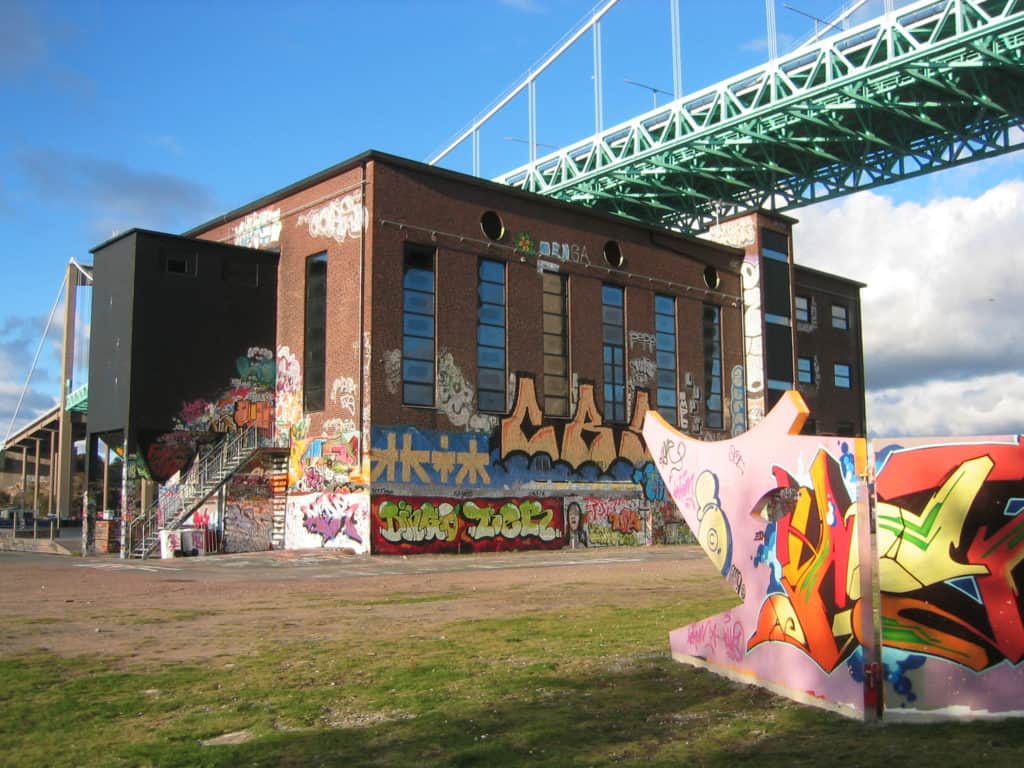
Photo credit: rodasten.com
Art gallery Röda Sten, located right under the green Älvsborgsbron bridge, is an art gallery that often displays modern art exhibitions about relevant, contemporary themes. Every week, the gallery also organises a free workshop for art enthusiasts under 26. There is also a restaurant and cafe inside – if there isn’t too much wind, the terrace is located perfectly along the river banks.
This museum is for anyone who wants to learn more about the history of Göteborg. Margot, for example, saw an exhibition about Göteborg as a city of music, and she learnt that the city used to be the jazz centre of Sweden and that Håkan Hellström is far from the only Swedish musician worth learning about.
Since eating, drinking and fika are very important to the Swedish people, the following list of cafes, restaurants, bistros and other cosy places to go will be quite extensive. As such, there will not be any explanation as to why they’re in this post, because they really don’t even need any explanation. The places are listed by neighbourhood.
Are you a nature enthusiast? Do you get energy from hanging out in green places and breathing fresh air? If so, Göteborg is the perfect place for you. It has plenty of nature-related things to do and visit. In this section, I’ll give you a selection of them.
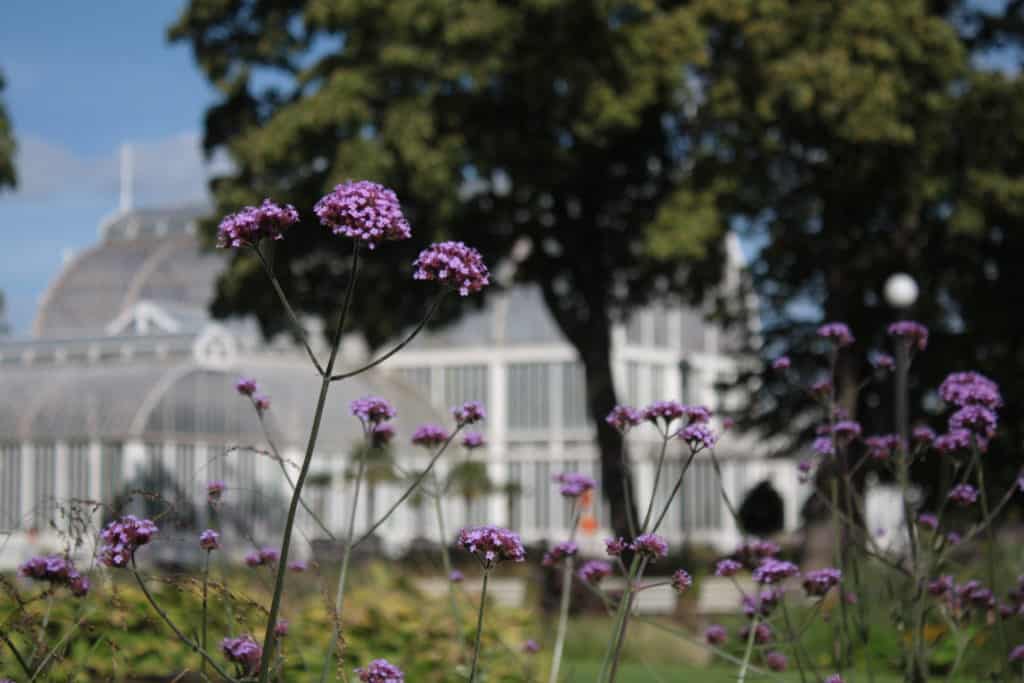
Photo by Margot
Palmhuset is an impressive 19th-century greenhouse right in the city centre. It’s incredibly popular among wedding planners and Instagrammers (seriously, just check the hashtag #palmhuset). In the central part of the greenhouse, you’ll find a stairway to an elevated platform where you can enjoy your home-made lunch in peace, surrounded by palm leaves. This platform can be a godsend on cold, rainy days when you just want to have an affordable lunch in an interesting location.
The park that houses Palmhuset is called Trädgårdsföreningen. Talk about a tongue twister. This park also has a rose garden, where you can find the Rosenkaféet, which also serves lunch and drinks.
Taking tram 11 heading toward Saltholmen will take you right to the quay where ferries go toward the Göteborg archipelago (Swedish: Göteborgs skärgård). The ferries are a part of the regular public transport network, so your season ticket, day ticket or three-day combo ticket should cover it. A regular ticket is valid for 90 minutes, which should get you a one-way trip, including the tram and the ferry, provided you have a little bit of luck with your timing. You can find more information about getting to the archipelago on the Swedish public transport website.
During the summer, you can take a trip to the archipelago to go swimming, but be cautious of the jellyfish. During the winter, you can go there to get some (really) fresh air. Styrsö, one of the main islands, has those pretty Pippi Longstocking houses (see pictures), as well as a vantage point called Stora Rös Café Öbergska at the Bratten quay.
Vrångö is a calmer island with nature reserves on either side (Norra & Södra Slingan), fit for short hikes with splendid views. On the east side of Norra Slingan, there’s a small sandy beach. Vrångö also has a vantage point called Lotsutkiken.
Fun fact: the inhabitants of this archipelago pretty much only move around using golf carts or motorised carrier cycles. And, if you’re lucky, you might even get to spot some wild animals.
Slottsskogen is Göteborg’s main park, featuring a free zoo that includes animals such as penguins and elk. Moreover, Slottsskogen is the best place to see the result of the Swedish paternity leave policy, as you can easily spot groups of men with baby buggies. A popular sport in this park is roller skiing, the off-snow equivalent of cross-country skiing (according to Wikipedia, at least).
Right across the street from Slottsskogen, you can find Göteborg’s botanical garden, entitled Göteborgs botaniska trädgård. It’s one of the biggest botanical gardens in Europe.
The gardens feature many small paths for visitors to explore, as well as thousands of species of plants to marvel at. Eventually, the paths will take you to the entrance of the nature reserve called Änggårdsbergen, where you can continue your hike. You could eventually make your way to Guldhedstornets Kafé, a fika place located on the top floor of a water tower that is still in use nowadays. This cafe, because of its high altitude, offers visitors a panorama view of the city.
At the east side of Göteborg is Delsjöområdet, a large nature reserve that is known for its many trees. Among local residents, it’s a popular place to go for a swim when temperatures allow it. Within this nature reserve, there are two lakes: Stora Delsjön and Lilla Delsjön. These lakes are easily accessible through public transport, although you’ll have to walk a fair bit to actually get there.
In the middle of Stora Delsjön, there is a rock right below the water surface. If you want to get an Instagram shot of you walking on water, this is your best bet. The two lakes are also the most accessible location to do some kayaking or hiking near the city.
Just like most other major cities around the world, Göteborg is full of history and interesting architectural concoctions. In the next part of this blog post, I’ll share some architectural places worth visiting with you.
The best vantage points to see the city itself are called Masthuggsberget and Ramberget. Both come with a considerable hike, but they’re definitely worth the effort. While both are located just outside of the city, Masthuggsberget is still a bit closer and will give you the most detailled view over Göteborg.
There are rocks around the church (Masthuggskyrkan) at Masthuggsberget, where you can take a walk and get a 360 degree view of the city.
Visiting Ramberget is very much recommended when there are fireworks along the river Göta älv. At that time, you’ll be able to see the entire skyline of Göteborg with fireworks in the background.
Skansen Kronan is also a popular vantage point due to its views and because it offers visitors an impressive look at the Oskar Fredriks kyrka (see below).
The most breathtaking walk in Göteborg has got to be the Göta Älv quay. Start your walk at Lilla Bommen (a very unique skyscraper that has been nicknamed “the lipstick”) and end in Maritiman (a free open-air museum with all kinds of old war ships), passing several landmarks on the way.
Those landmarks include Barken Viking (an old sailing ship), Göteborgs Gästhamn (old, red storage spaces where cafes and other hip spots can be found nowadays), Göteborgsoperan and some charming buildings with the typical copper-green towers.
Vasagatan is an avenue, named after king Gustav Vasa, filled with atypical but graceful late 19th century to early 20th century villas. At the junction of this street and Viktoriagatan, you will find a house called Tomtehuset, which roughly translates to “gnome house”. The house earned this name because of the mural paintings depicting gnomes as the first occupants of the house (an architect, a printer and a photographer).
In the middle of the street, there’s a walkway where you can go for a leisurely walk. If you do that, you’ll also pass the central university library, where you can go inside and take a quick look at the big reading room. The streets surrounding Vasagatan, such as Storgatan and Engelbreksgatan, also have some houses worth taking a look at. Outside the city centre, similar architecture can be found in the streets Berzeliigatan and Södra Vägen.
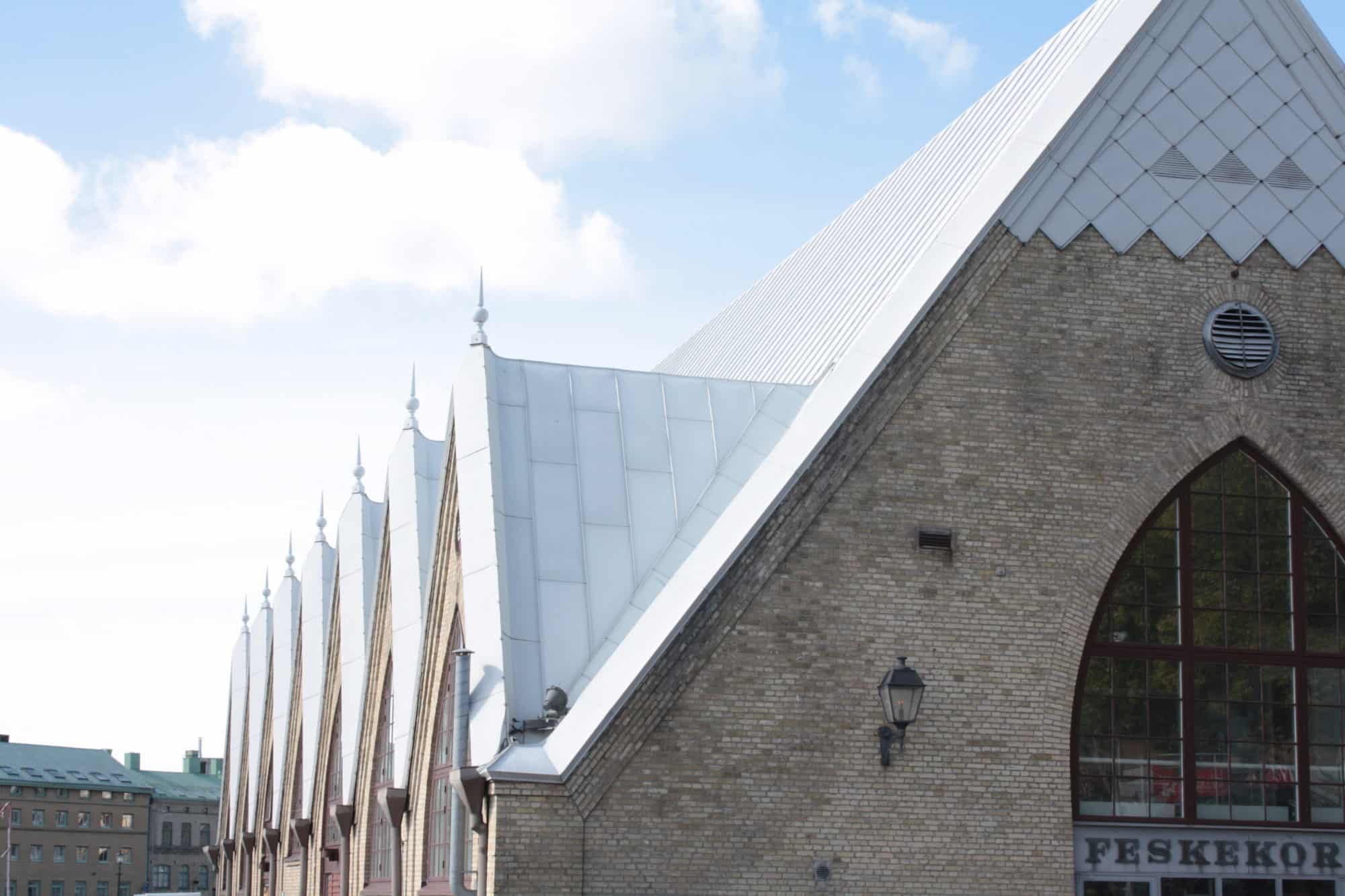 Feskekôrka is a word in Göteborg’s dialect, translated into English as “Fish church” – a very logical name for an indoor fish and shellfish market that looks like a church. It’s one of Göteborg’s most famous tourist attractions and it’s very likely that this is the only one that might ring a bell.
Feskekôrka is a word in Göteborg’s dialect, translated into English as “Fish church” – a very logical name for an indoor fish and shellfish market that looks like a church. It’s one of Göteborg’s most famous tourist attractions and it’s very likely that this is the only one that might ring a bell.
This is a beautiful church with a dark-red facade and copper-green and golden details. You’ll probably come along this church on your way to Masthuggsberget or you can see it from Skansen Kronan.
Göteborg is not only for architecture and nature enthusiasts, though. If you just want to find some good stores to hang out and buy some things, here’s a list of the best shops in Göteborg.
The most common shopping locations in Göteborg are without a doubt Nordstan (the biggest mall in all of Scandinavia, mostly featuring chain stores) and Inom Vallgraven (a larger area; the closer you get to Nordstan, the more chains you’ll come across). If you want to find stores that are less well-known to the general public, you might want to check out Magasinsgatan. For something between the two, you can probably get your fix in the streets between Östra and Västra Hamngatan.
For artisanal products, you’ll have to be in Kronhusbodarna (yellow houses around Kronhuset, Göteborg’s oldest building) and Haga (the old working-class neighbourhood; now a very touristy but convivial street with coffee shops and other stores). These neighbourhoods are great if you’re looking to buy souvenirs for friends back home (like winter sweaters and slippers).
Typical Swedish delicacies can be found in Saluhallen, the indoor market, or in one of the Kronhusbodarna, a candy store called Göteborgs Choklad & Karamellbutik.
Though Göteborg may have a lot to offer to its visitors, you might still want to take a look at the surrounding areas. That’s where a day trip can come in handy.
Marstrand is a small coastal city just north of Göteborg. Even more north are Fiskebäckskil, Lysekil and Fjällbacka, which might be nice places to combine for a day trip from Göteborg. It should take you about an hour to get from Göteborg to Marstrand using public transport.
Tjolohölms Slott is a castle located right along the coast, about 40 minutes south of Göteborg. Fun fact: this castle was used as a set for Lars von Trier’s film Melancholia.
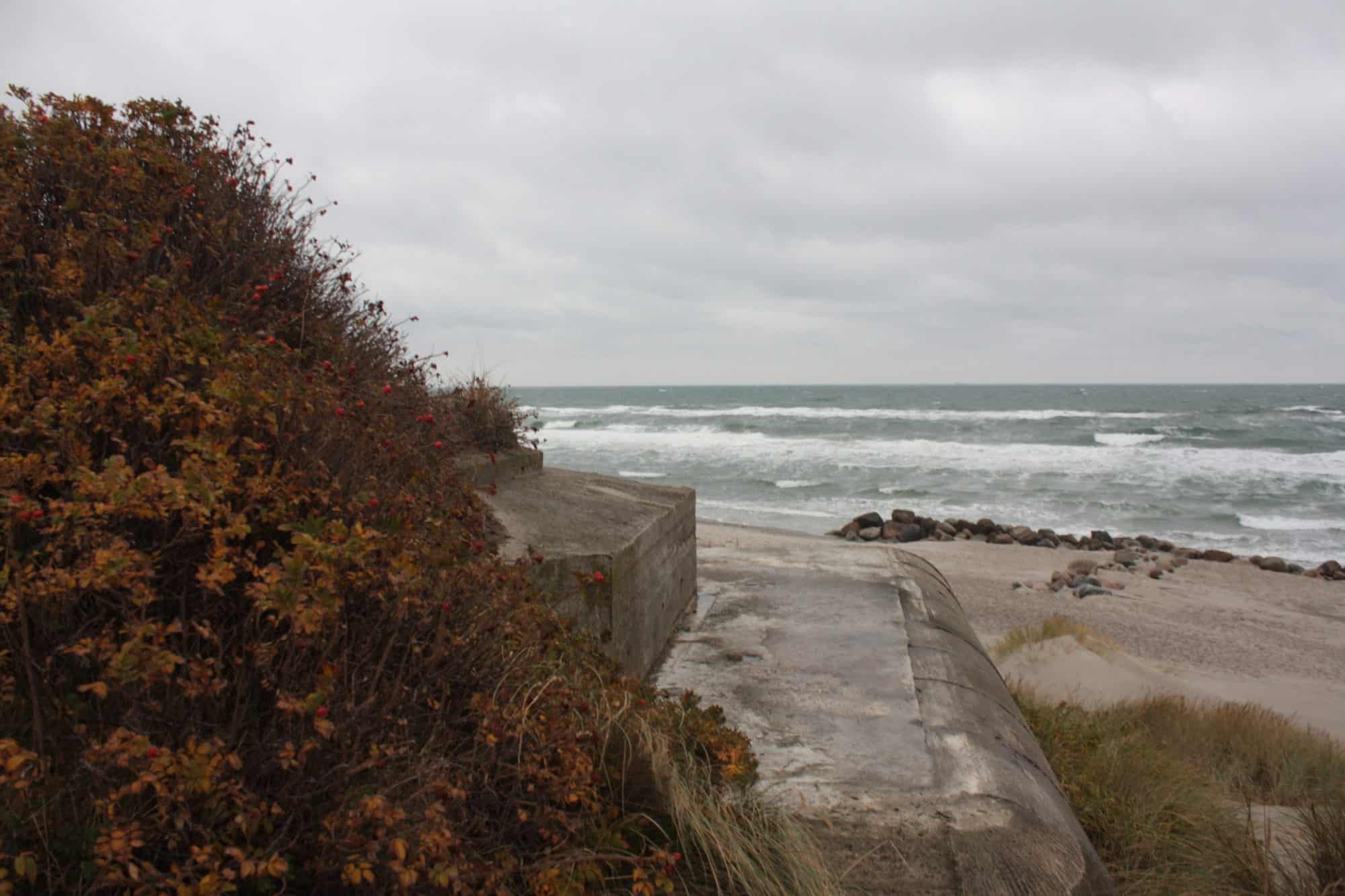
Visiting Skagen on a day trip from Göteborg is tough, but it’s so worth it. The ferry will take you to Frederikshavn for a very cheap price (if you’re not travelling by car), where you can take a train to the very north of Denmark. There, you can take the Sandormen (a tractor-slash-bus) to the place where Kattegat and Skagerrak meet and spot seals.
Skagen is also famous as the central city of the Skagen Painters (including Krøyer), whose paintings can be visited in Skagens Museum.
Last, but not least, you can also visit “den tilsandede kirke“, which literally translates to “the sand-covered church”. The only part of this church that is still visible today is its tower, while the rest of the building is covered in dune sand.
That was it from me. If you’re going to Göteborg soon, I’d love to hear from you on Twitter or Instagram, and I’m sure Margot would, too.
Once again, Margot, thank you so much for letting me use your insider tips and insights to create this guide for people who want to visit Göteborg.
Thanks for reading!
-S
PIN IT!
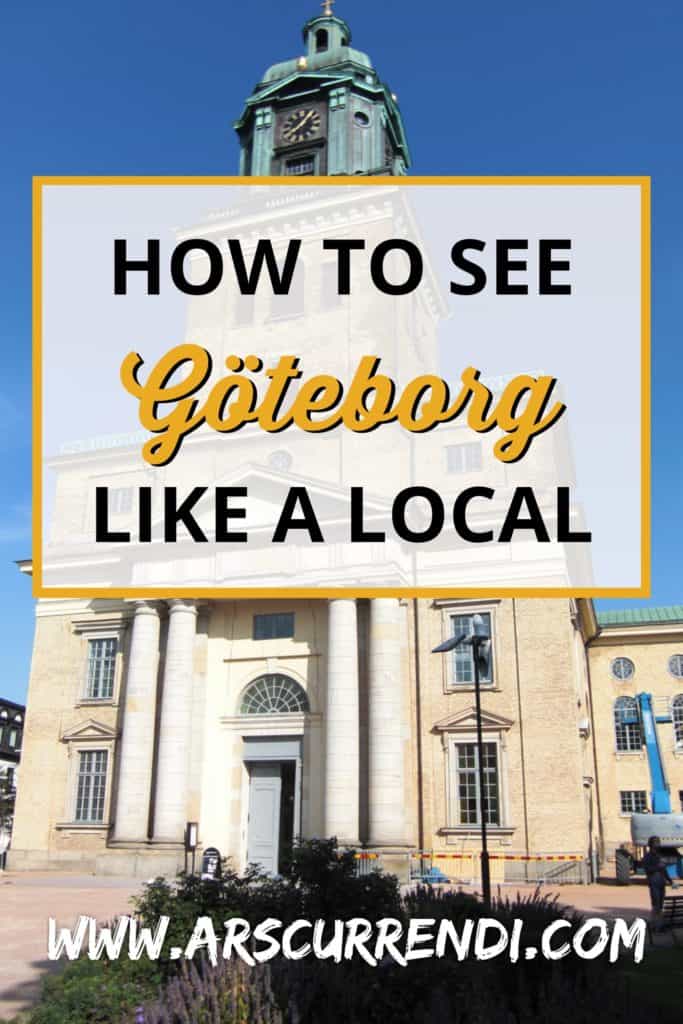
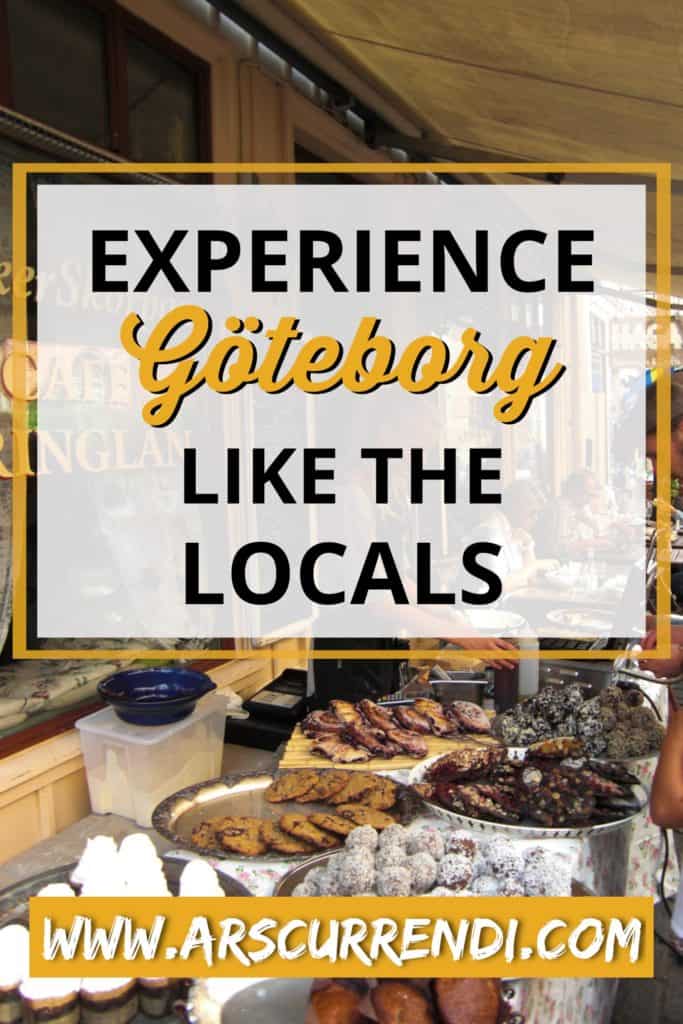
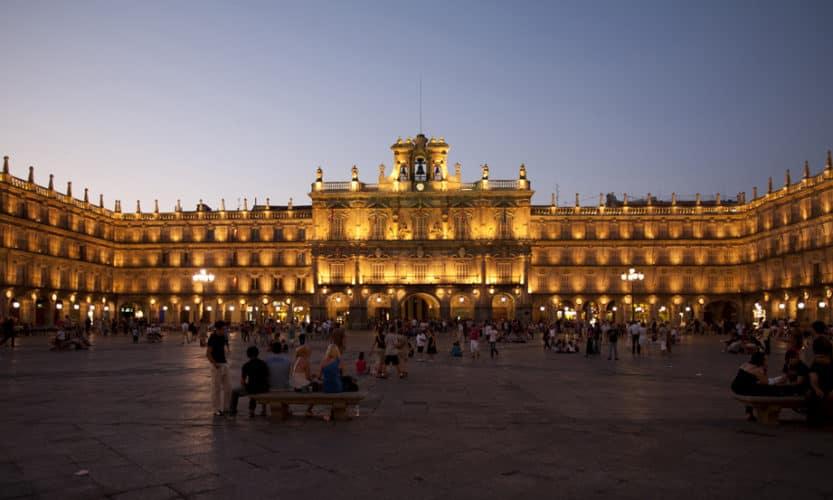
If you ever get the opportunity to go study abroad, you should definitely do it. If you’re going to study abroad in Salamanca, I have some good news for you. It’s the perfect city for Erasmus students. Why, you ask me? Here’s why.
Latest update: 23 June 2019
Studying abroad a life-changing opportunity. You get a chance to learn a new language. You make dozens of new international friends.
There will be a lot of stories you can tell your grandchildren when you’re old and you’re chilling in your rocking chair.
You become more independent. You get a thorough insight into a foreign culture.
Going on Erasmus is an adventure if there ever was one.

Are those enough reasons?
If yes, good. Continue reading.
If no, you might as well close this page right now.
Salamanca is a true Erasmus city. Obviously, in order for a city to be qualified as an Erasmus city, it must be a university city first. Out of its 230,000 inhabitants, 30,000 are students, making them one of the primary sources of income for the city.
Out of these 30,000 students, you’ll find that around 9,000 students are on Erasmus in Salamanca.
That means that one in every four students is studying abroad there.
Let that sink in for a minute.
This, in turn, means that there are tons of things to do for these people. In other words: as an Erasmus student in Salamanca, you’ll never be bored.
There are two main Erasmus-oriented organisations in Salamanca: ESN and Nuve Erasmus. Both offer a great variety of things to do and trips.
On top of that, there’s this event called “Nochevieja universitaria”, which translates to “Academic New Year’s Eve”.
The concept of this event is that a lot – and I mean A LOT – of students, from all over Spain, gather in Salamanca to celebrate New Year’s, at the beginning of December.
If you have other friends who are studying elsewhere in Spain, this event is a fun way to see them again after a few months apart.
It’s surprisingly easy to be an Erasmus student in Spain. You’ll meet new people, make awesome friends and have the time of your life.
Like I said before, Salamanca has about 230,000 inhabitants. Now, for some people, that might be a lot, but compared to other major cities in Spain (or in Europe, for that matter), Salamanca is relatively small.
This can be both a positive and a negative aspect of life in Salamanca. On the one hand, you’ll get to come across people you know in the streets, you’ll basically know everyone and you’ll get more personal assistance in classes.
On the other hand, however, you might feel like you don’t have any privacy and you’ll want some time for yourself.
In the end, it all comes down to what kind of city you prefer.
In Spain, it’s a well-known fact that the inhabitants of Castilla y León are generally considered to speak the standard variety of Spanish. In other words, they don’t have a specific location-based accent.
Do you see where I’m going with this?
If you’re going on Erasmus, you’re probably looking to learn a new language (or at least enhance your knowledge of a language you already know).
In that case, I highly recommend going to a city located in Castilla y León. And, what do you know, that’s exactly where you can find Salamanca.
Another plus is that it’s relatively easy for a foreigner to understand what someone from Salamanca is saying, because they don’t really have any specific vocabulary or pronunciations.
As for me, improving my Spanish knowledge was more or less the only objective of my studying in Spain. And look how that turned out. 😉
Basically the entirety of Salamanca is made of the same kind of stone.
Most, if not all, of the buildings in the city centre consist of the same blond sandstone. There’s a reason why people call Salamanca the “Golden City” (La Dorada).
Despite – or maybe even because of – the recent oxidation and deterioration of the stone, Salamanca is still more than worth visiting. Or living in, for that matter.
In 1988, the Old City was proclaimed UNESCO World Heritage for “retaining its key attributes of authenticity in terms of form, design, materials, and substance”.
(Tip: Check out the Roman bridge at the south of the city, stretching over the river Tormes!)
Coming from a city where the authorities don’t really go out of their way to keep the city clean, it’s safe to say I was impressed at how clean Salamanca really is.
Every night, city workers set out with the mission to clean the streets – and they do a terrific job every single day.
It’s kind of funny to see these cleaning cars do their thing while you’re still going out at 3 am.
When I – and the other people who were on Erasmus in Salamanca – got my orientation at the beginning of the semester, we were told over and over again that Salamanca was a clean city.
I thought they were exaggerating, but as it turns out, they were more than justified to do so.
In those same orientation sessions, the chief of the police corps was also there to tell us all about how Salamanca worked.
In his five-minute speech, he must have said “Salamanca is a very safe city” at least ten times. It was a bit much, but he did get his message across.
During my four-month stay, I didn’t find out about any big crime once. That might be a coincidence, but I do believe Salamanca is generally a very safe and secure city.
My female friends told me they didn’t feel nearly as oppressed and viewed when they were walking home alone at night as they did at home.
If you’re a healthy mom looking into Erasmus destinations for your dear child, you might want to look away now. Don’t say I didn’t warn you.
Everyone who has spent some time in Salamanca knows about Varillas. It’s a restaurant that is pretty much only opened at night, where you can get French fries, kebab and hamburgers.
Located in Calle Varillas, right in the centre of the Salamanca nightlife, its main clientele is made up of drunk students who want to eat something greasy before they head home and wake up with a hangover.
I must admit, every single time I found myself in this restaurant, I was in that situation exactly. And I have no shame or regrets. Getting number 24 (fries, meat and sauce) here was often the best part of a night out.
Sitting at a table, engaged in drunk conversations with my friends while munching on some greasy food? Those are the things I’ll remember.
Looking into a place to study abroad in Spain, where people know each other, you can have a LOT of fun and your Spanish will increase drastically?
Go to Salamanca.
If I haven’t managed to convince you in this blog post, I’m afraid nothing will.
If you do go on Erasmus to Salamanca, feel free to send me a message or leave a comment for specific tips and tricks.
And as always, thanks for reading!
-S
PIN IT!
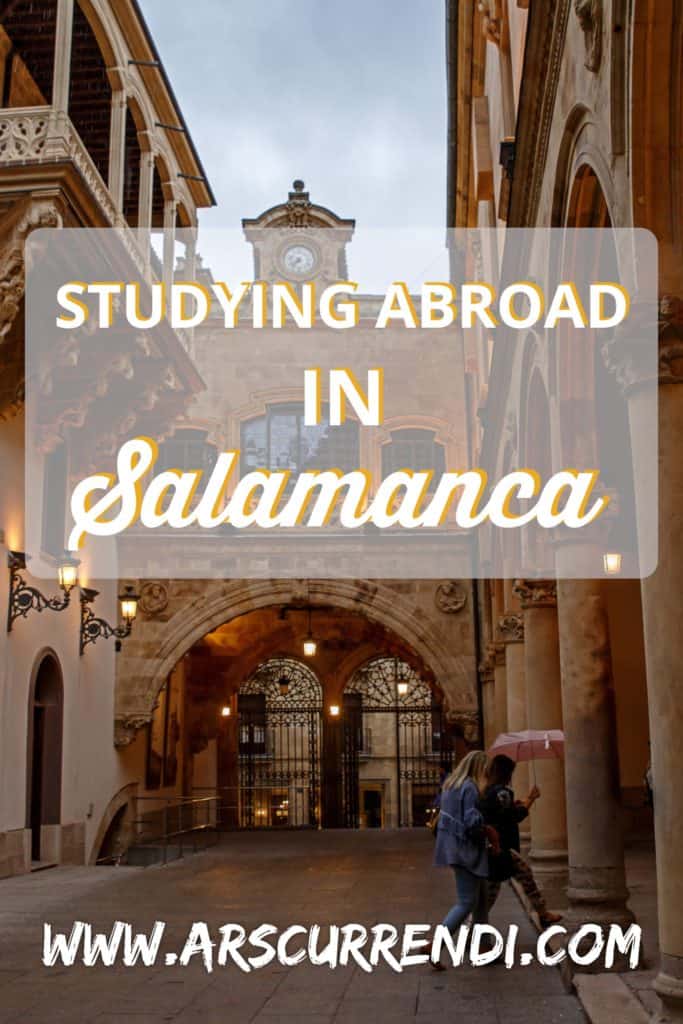



If you’re reading this post, it’s either because you 1. have plans of going on Erasmus in Spain; 2. want to go on Erasmus in Spain; 3. are an avid reader of Ars Currendi blog posts (yeah, right). Either way, here’s everything you need to know about studying abroad in Spain.
I’ll be arranging this post in the form of short, to the point tips that should help you survive your stay in Spain. I can’t give you any specific information about housing, weather or nightlife, because I only experienced those things in Salamanca. What I can do, however, is give you loads of information about those things specifically in Salamanca.
To start off, here are some images to give you an idea of what it was like.
Seriously. I was afraid I wouldn’t be able to make any friends and have to spend 5 months crying myself to sleep because I felt so alone. Well, with the end of my Erasmus stay in Salamanca comes the realization that I had never made friends as easily as I did here.
As an exchange student, it’s incredibly easy to find other people who are right there with you. Most of you will arrive in the city at around the same time, which means that there is a truckload of people who are right there with you – alone and confused in a foreign city.
Obviously, student organizations know this. It happens every year. So they organize countless events to give all those students a chance to get to know some people and find friends.
I actually met most of my friends through these events, so I can tell you this. If you think you’re too awkward to go to these things, you’re not. I’m just about as awkward as they come around new people and I managed to make it work.
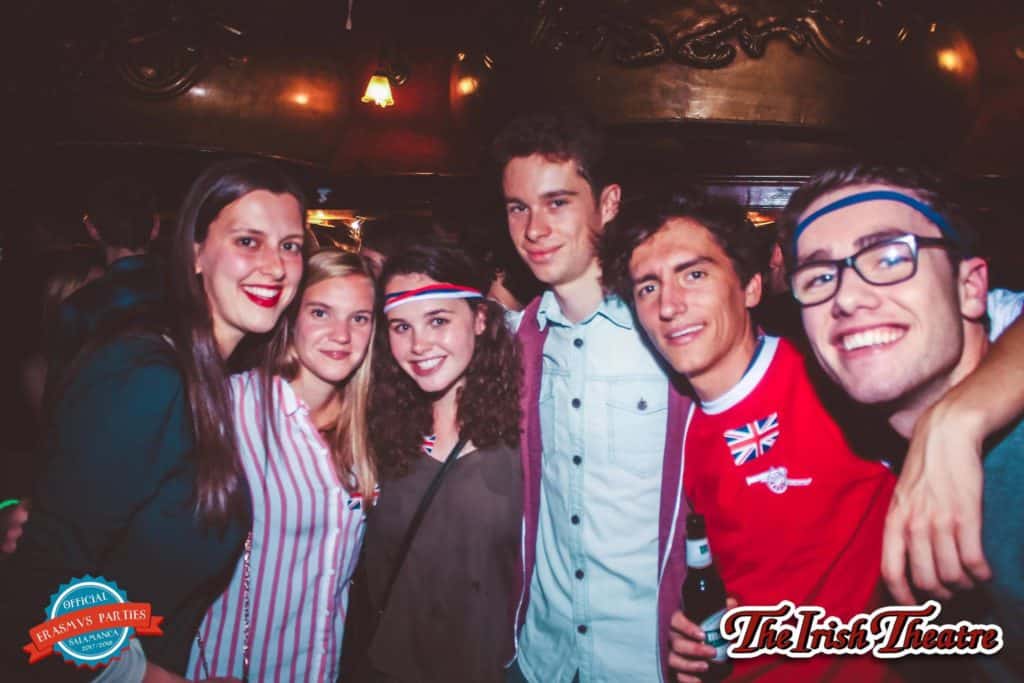
As Jan Levinson so eloquently put it in my all-time favourite episode of The Office, people in Spain often don’t even start eating until midnight.
Of course, that’s a bit of an overstatement, but it is true that the daily rhythm in Spain is very different from what I’m used to in Belgium. For example, Spanish people usually only have lunch around 2-3 pm. And then they take a nap.
The thing is, basically everything happens two hours later than it does in Belgium. In Spain, you get up later, you eat lunch later, you have dinner later and you go to sleep later. And that’s actually surprisingly easy to get used to.
This paragraph will have a number of very cheesy, or even cringe-worthy, statements. You have been warned.
If someone asks you to do something while you’re on Erasmus in Spain, do it! Whether it be a party, a picnic or just hanging out at someone’s apartment, I can guarantee that it’s going to end up being a lot of fun. Even if you don’t really feel like it.
After all, we only regret the chances we didn’t take. I’m just saying, I’ve never heard anyone say they regret spending time with friends.
This is your one chance to do some crazy things without anyone back home finding out. It’s your time to say YOLO and really mean it.
Having spent four months abroad, I am now certified to tell anyone and everyone that it goes by a lot quicker than you’d expect. It feels as if I just arrived here last week, but here I am back in Belgium. I’ve said goodbye to some amazing people and it breaks my heart to know that I probably won’t see some of them again.
Before I went to Spain, I thought that four months might be a bit much for a first-timer like me. But now, I realize it wasn’t even close to enough to do all the things I wanted to do.
So believe me when I say you should take advantage of the opportunities you get. You will most definitely regret it if you don’t.
I know, I know. Saying this makes me look like the biggest jerk you’ve ever met. But hear me out. School in Spain is relatively easy, especially if you’re coming from a country like Belgium, The Netherlands, the UK or Ireland. (There are obviously other countries that qualify as having “tougher education than Spain”).
That being said, you should not feel ashamed or bad about yourself if you skip on some schoolwork to go to a party or hang out with your friends.
This wouldn’t be a travel blog if I didn’t talk about travelling at all. So, here it is. If you’re studying in Spain, you have tons of opportunities to go travel and see lots of beautiful places.
On that note, go take a look at some of my videos (Salamanca, Bilbao/Gaztelugatxe, Segovia/Ávila, Barrio del Oeste, Morocco) to get some inspiration!
This is an important point because it’s often overlooked. Contacting the people responsible for your Erasmus stay in Spain is essential. For example, you should email your professor before the term begins to see if they even like exchange students. You need to find out what the assignment is if you didn’t hear it in class and you don’t have anyone who can tell you. You need to know when classes start and end. (I think you get the idea)
I said that making friends as an Erasmus students is very easy – and I stand by that. I’m just saying, you shouldn’t expect most, if any, of these friends to be Spanish people.
Anyone who has been an exchange student will agree with me when I say that natives don’t really care about them. I’m not judging them, because the exact same thing happens at my home university.
People won’t hate you, but they’ll mostly be indifferent about you. And that’s definitely okay, because you’ll have a very fun group of international friends to share your adventures with.
It’s terrifying and amazing at the same time. You’re independent but you share everything you experience with your friends. At times you’ll feel demotivated and lonely, but that only makes the other moments so much more worth it. After all, without the lows, you would never reach the highs.
I think it’s easier to explain what my stay in Spain was like with a video. So, without any further ado, here it is. The culmination of four months in Salamanca. Enjoy!
And as always, thanks for reading!
-S
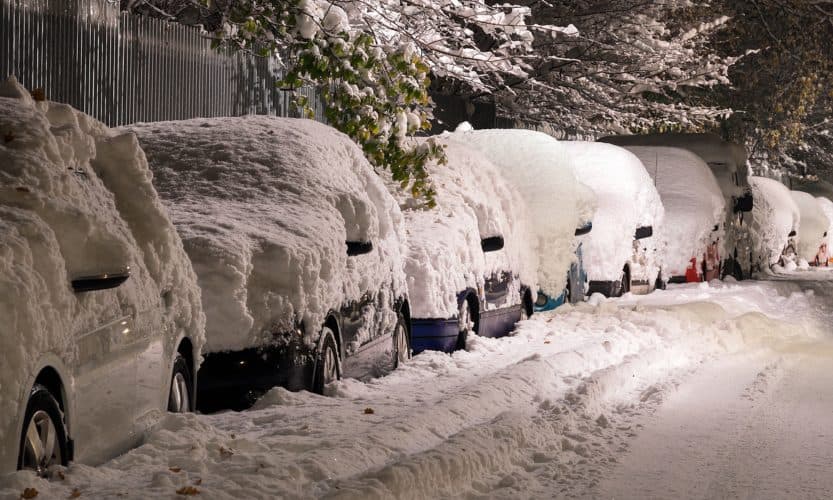
I wasn’t planning on writing another blog post before my Erasmus stay in Spain ended, which is in about three weeks. Then again, I wasn’t planning on being stuck in Ávila and spending the night here. Thank you, Spanish public transport.
Okay, so today was supposed to be the day that I flew back to Spain and then took a bus from Madrid to Salamanca. Badabing badaboom. But, of course, as my luck would have it, there’s some pretty heavy snow in Spain at the moment. This complicated my travel plans quite a lot. This is the story of how that happened.
Disclaimer: this post will be rather short and it won’t contain any pictures.
According to the original plan (plan #1), my dad drives me to the train station, I take two trains to get to Brussels Airport, where I catch a flight to Madrid. After that, a bus takes me from Madrid to Salamanca. By now, it should be clear that that’s not how it happened.
We had a family Christmas thing yesterday, so nobody was looking forward to driving me to the train station. Eventually, we decided that my dad was the person who had to get up at 6:30 to drive me. (Dad, if you’re reading this: thank you!)
So far, so good.
I managed to buy a train ticket before my train left the station, and I caught the train. Luckily, it was one of the newer trains in Belgium, equipped with an electricity socket. I say ‘luckily’ because – for some reason – my phone refused to charge last night. No harm done, because I was able to start charging my phone on this train.
I also watched two episodes of 11.22.63 (a show about an English professor who travels back in time to prevent the assassination of John F. Kennedy). I highly recommend you give this show a try if you’re into history and conspiracy theories.
This is where things started to go wrong.
Well, nothing too big happened. I didn’t miss my flight. It did leave about half an hour late, though. Presumably because of the bad weather conditions in Spain. This meant that the time that I had counted on for lunch (and to find my bus) was cut short, which started the avalanche of stress.
For lack of a better alternative, I ate at the first airport restaurant that I came across, which happened to be Burger King. Add to this the fact that I wasn’t even sure I was going in the right direction and you’ve got a recipe for disaster.
I had booked a spot on a bus from Madrid to Salamanca at 3 pm. After losing half an hour on the plane, I finished eating my burger and fries at around 2:30 pm, which gave me plenty of time to find out where my bus was supposed to arrive. And I did.
I went to the bus parking, and I started waiting for the bus.
This is where the public transport system of Spain started to fail me.
After waiting for the bus until 3:20, I saw people start to leave the bus parking, heading back inside (where it wasn’t as cold and it wasn’t raining). I obviously found it rather odd that the bus still hadn’t arrived, so I decided to check Twitter for any news.
And that’s when I found out about the snow crisis in Spain. This was the Tweet that informed me about the fact that all buses in Castilla y León (which is where I had to go) had been canceled until further notice.
Great.
Información sobre corte de servicios y carreteras por temporal. Servicios AutoRes. Día 7. Todos los servicios Castilla Leon y Galicia están suspendidos en la AP6. Disculpen las molestias.
— Avanzabus (@avanzabus) January 7, 2018
This is when the “Googling for viable alternatives on my phone, which desperately needs to be charged again” started. I looked at taxis, buses, trains, Blablacar, hitchhiking, … You name it, I probably considered it.
In the end, I decided to go with an updated plan (plan #2), involving another buttload of public transport.
I take a bus to Terminal 4, I take a train to Madrid Chamartín, I take another train to Salamanca, and that’s it. Can you guess whether or not this plan worked? (It didn’t)
It started out fine, though. I feel like I owe you a bit of an explication as to what Terminal 4 and Chamartín are. Let’s see: Madrid Airport (full name: Aeropuerto Adolfo Suárez Madrid-Barajas) consists of two buildings. The main building houses terminals 1, 2 and 3, and it is (obviously) the largest of the two. The second building takes care of terminal 4, and it’s smaller and newer (built in 2006) than its big brother.
When my plane landed, I was in the big building, and my bus was supposed to be there as well. Upon finding out that it wasn’t going to come, I found out that the train station was located in the other building, so I had to take a transfer train (which was free, thank goodness) to T4.
The transfer train took me to the T4 building rather quickly. This was when I was introduced to the wonderful world of Spanish trains, Renfe. I bought a ticket to get me from the airport to the main train station of Madrid, also known as Chamartín.
This was rather stressy, as I couldn’t find any way of finding out whether or not I was waiting at the right train track. Turns out I was.
Once I arrived at Chamartín, I started looking for a train to take from Madrid to Salamanca. The ticket machine told me that every direct train between those two cities had been fully booked, so that wasn’t an option any more.
My dad recommended that I take a train to Ávila, and then transfer to another train to Salamanca from there, which was what I was about to do anyway.
I bought a ticket to Ávila, and I got on the train.
Now, I’ve arrived here, and I’ve figured out that there is no way I’m making it to Salamanca today. All the trains had been booked again, the buses are still not driving, there are no Blablacars and a taxi would be way too expensive.
I informed my family, and they told me to stay here and take the train tomorrow. My dad booked a hostel room in my name (again, thanks!) and he gave me the address.
I’m now in my bedroom as I am writing this blog post. I’ve just gone out for dinner at a Chinese restaurant and I feel like I’m about to fall asleep any moment now.
I’ve booked a seat on a train bound to Salamanca tomorrow morning. It might be a little tight, because the train leaves at 9:15, and breakfast in this hostel only starts at 8:30. And it’s still about a 15 minute walk to the train station. We’ll see how it goes.
With a little bit of luck, I’ll be in Salamanca by lunchtime tomorrow. I’ll be sure to keep you updated.
Thank God for public transport. Right?
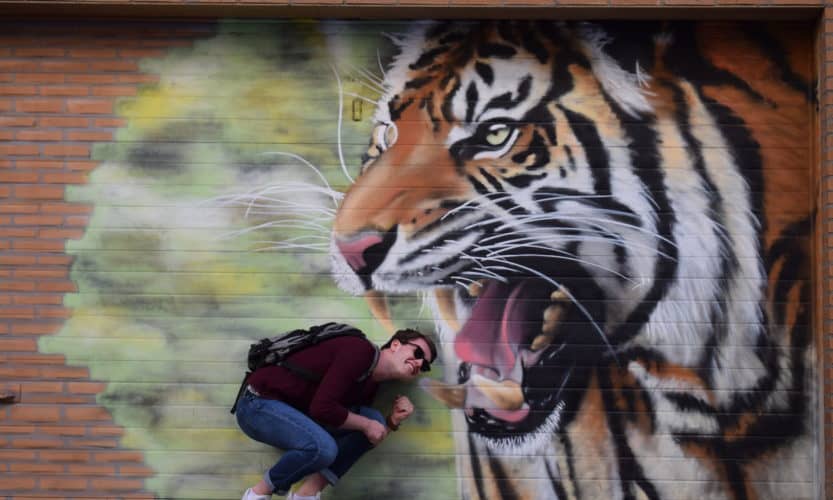
If you don’t live in Salamanca or know anyone who lives there, chances of you having heard of the Barrio del Oeste are pretty slim. But hey, isn’t that what I’m here for? In this post, I’ll be showing you the beauty that is this neighbourhood, with its funky graffiti and cute coffee shops.
After some careful planning, my friends and I got together for an afternoon of wandering around the Barrio del Oeste.
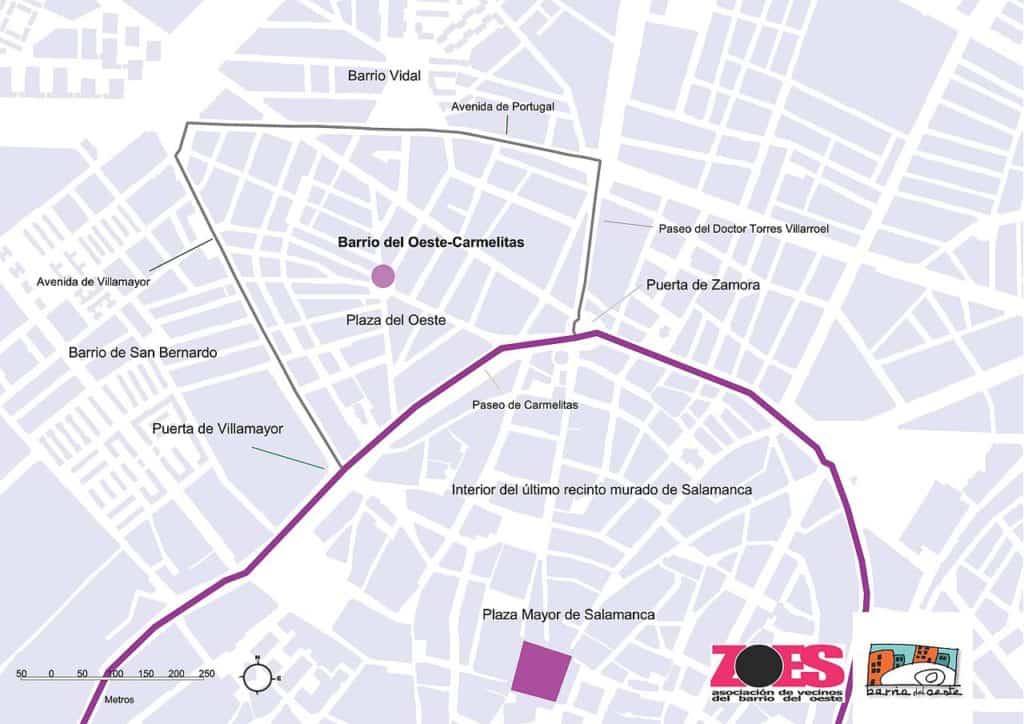
The great thing about this neighbourhood is, obviously, the graffiti. There’s at least one piece of graffiti on every single street (or, at least, so it seemed). That’s the main reason why it was so much fun to just wander around. You don’t even need to have any idea as to where you’re going.
The fact that all of this graffiti was made by young artists – with permission of the city – just makes it even better. The project even got its own website, on which you can see every piece of graffiti that makes a part of the project. (It’s in Spanish, but that shouldn’t stop you!)
For anyone who’s too lazy to check out the website, who’s not coming to Salamanca any time soon or who just can’t be bothered to do anything other than scroll, here’s some pictures we took while we were there.
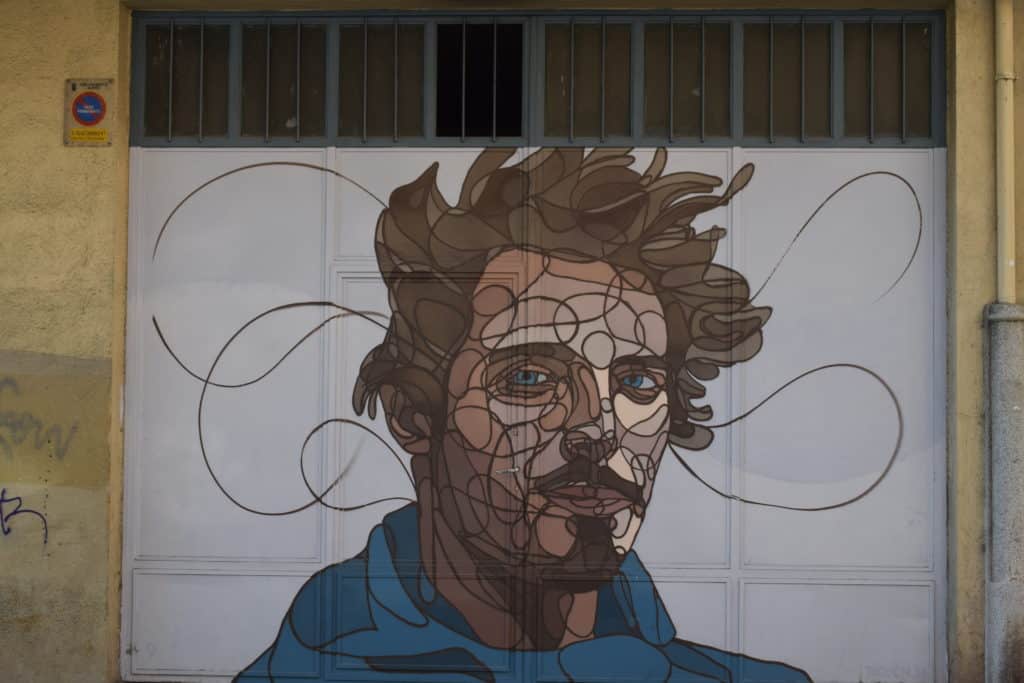
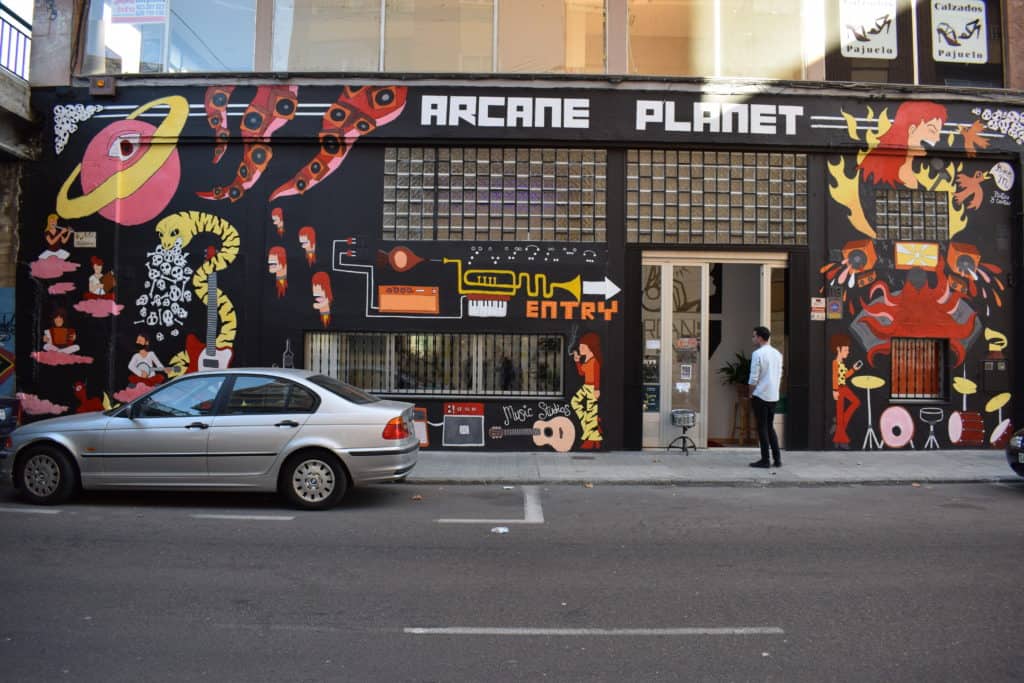
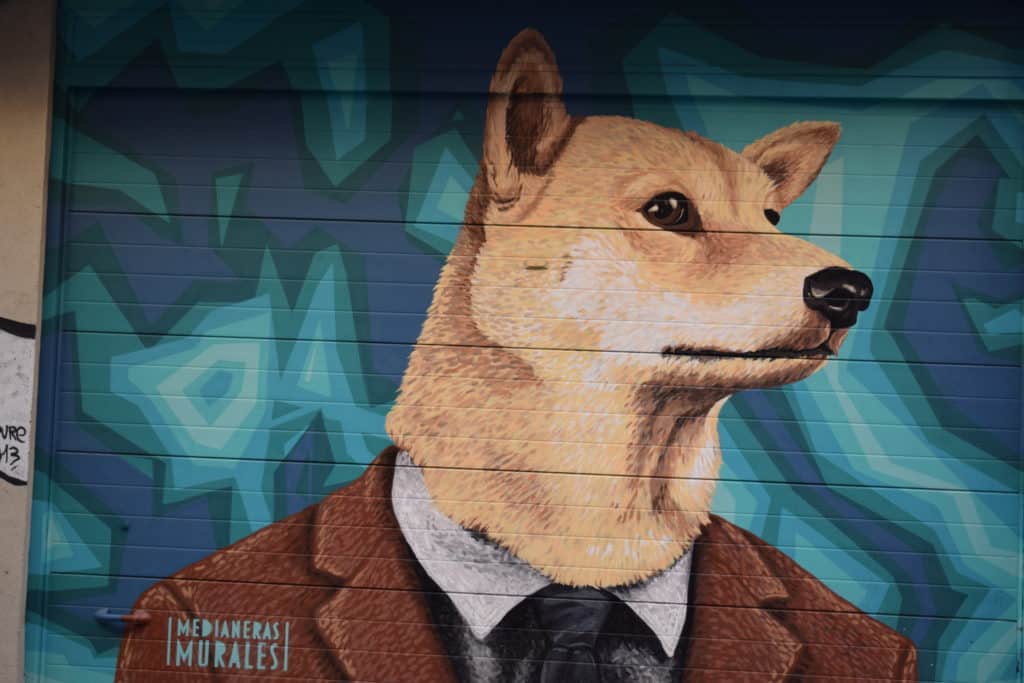
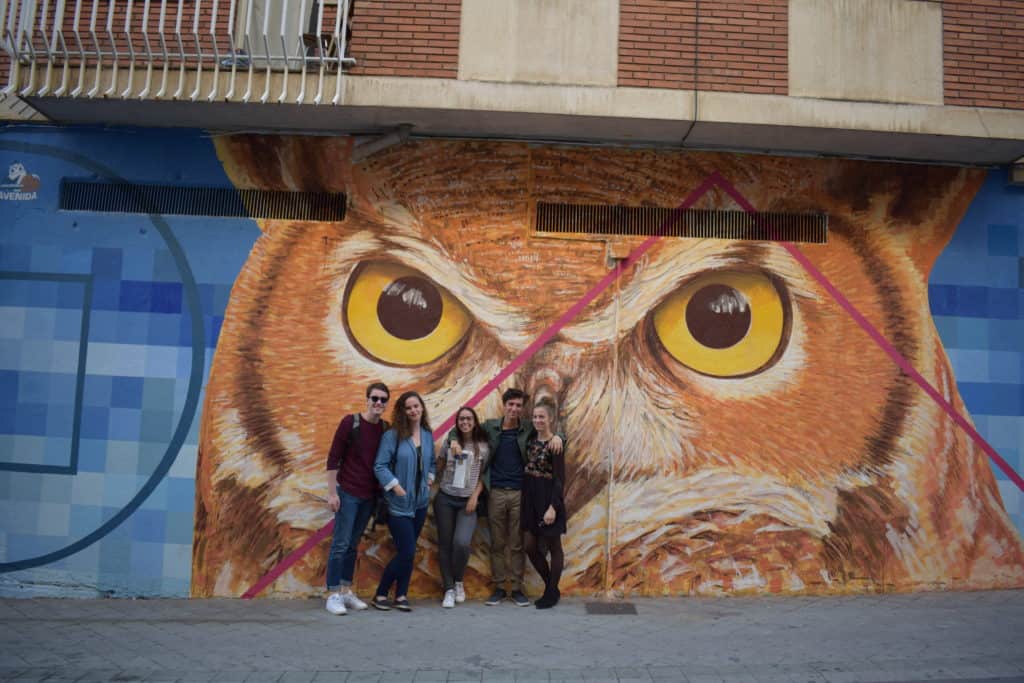
As if all of that wasn’t enough yet, there are quite some works where you can interact with the art. If you need any really cool pictures for Instagram, look no further. (Be creative: find new ways to interact with the graffiti and send them to me on Twitter or Instagram!)
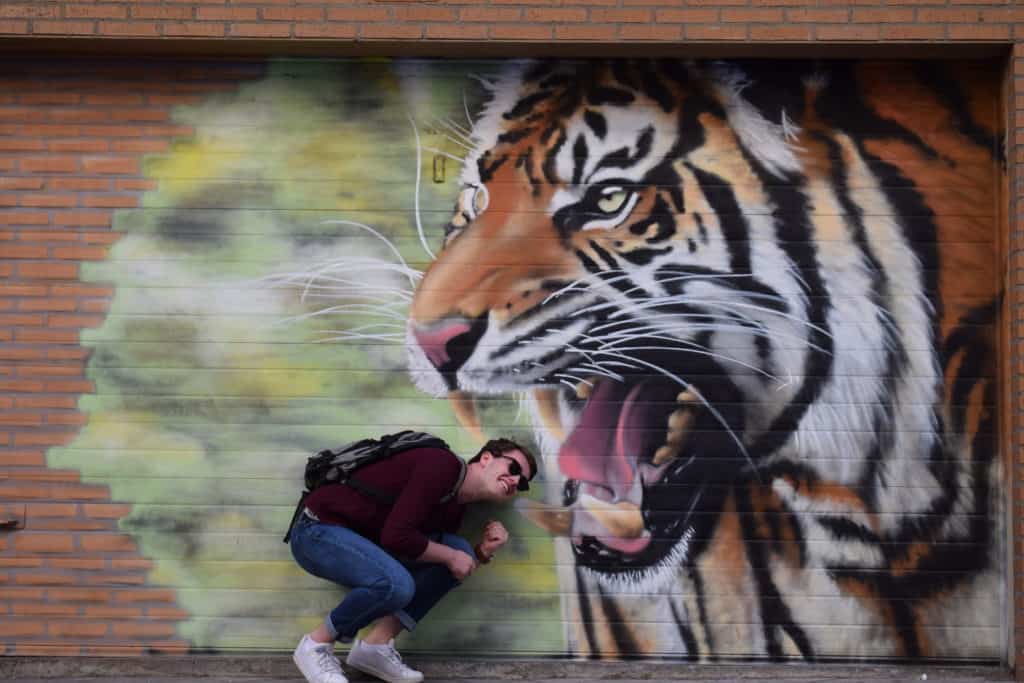
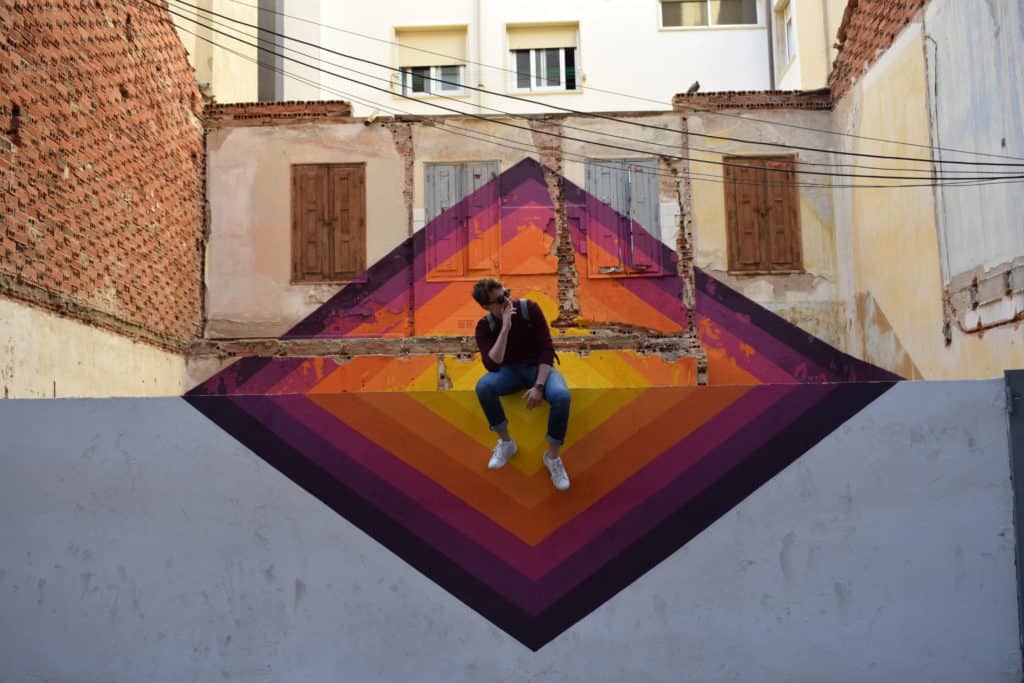
All in all, we had a fantastic day at Barrio del Oeste. I’d say it’s definitely worth coming to Salamanca for this. As if you needed any more reasons. I’ll be sure to show this neighbourhood to my parents and my sister when they visit in December.
While I hadn’t even heard of this place until a couple of weeks ago and it was definitely not on my Spanish bucket list, I’m very happy I visited Barrio del Oeste (it’s free!).
There’s also a video!
I know this was a short post, but there really wasn’t much more to write about when you’ve seen the pictures. (I did promise a lot of pictures in my last post, didn’t I?)
As always, thanks for reading!
-S
PIN IT!
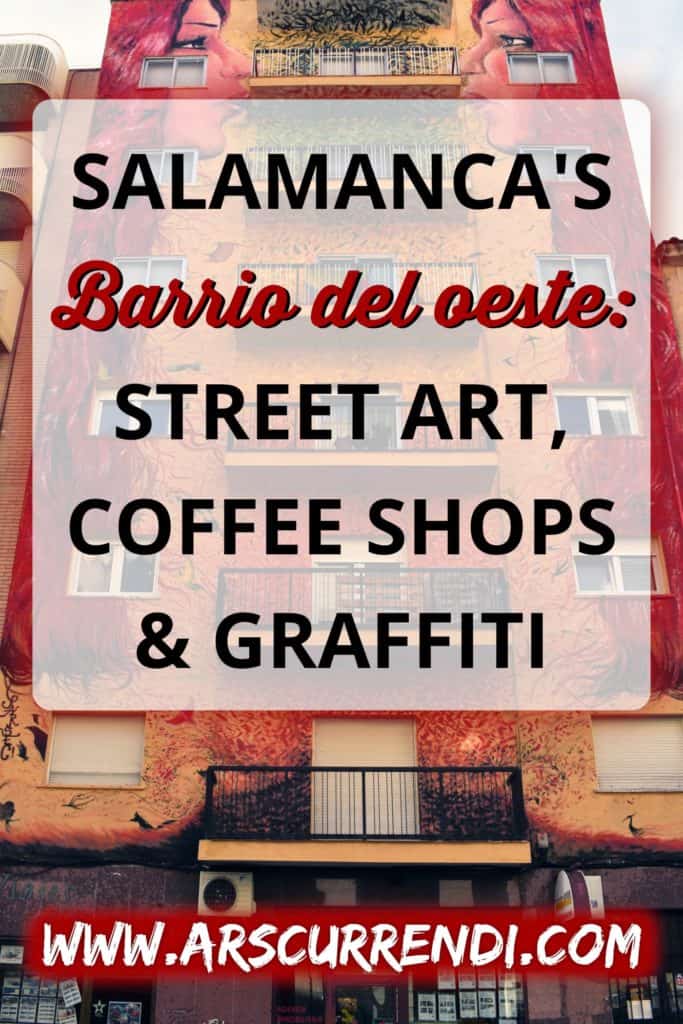
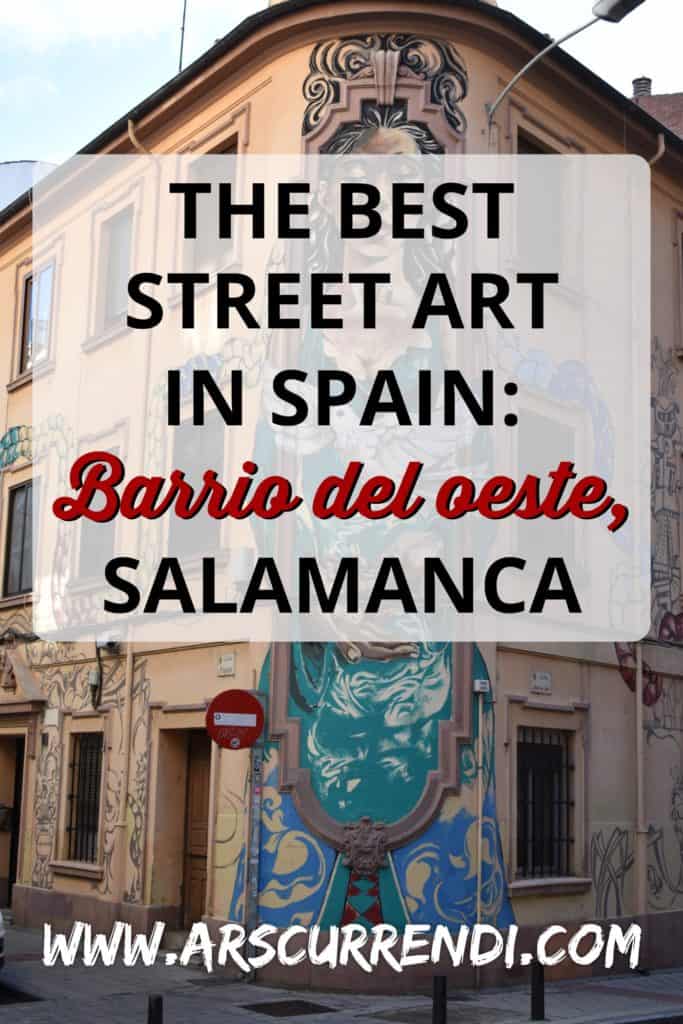
Design by NXNW.